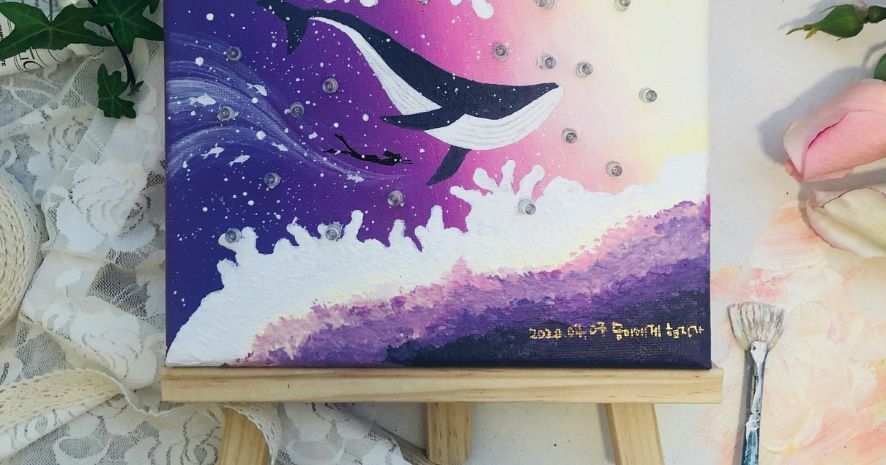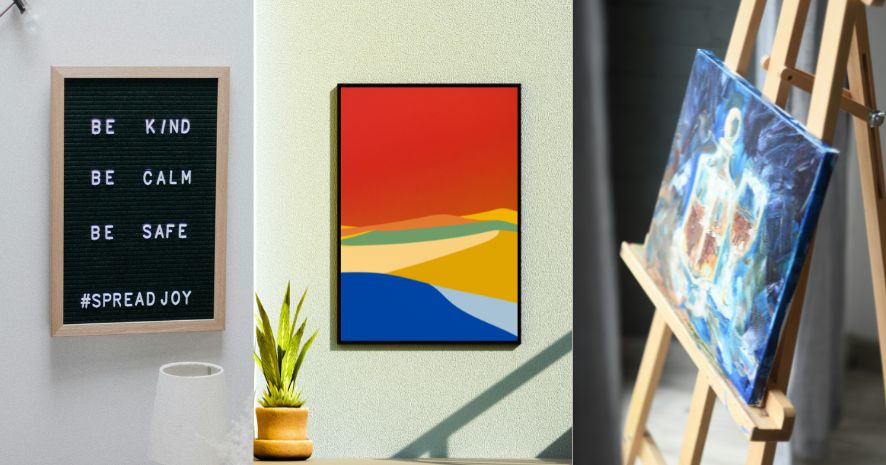Canvases by Style
Posters by Styles

Embarking on a journey through the world of art and decor, one term frequently captures the attention of enthusiasts and newcomers alike: “Canvas print.” This intriguing concept marries the timeless appeal of traditional painting with the cutting-edge advancements of digital printing technology.
From the texture of the canvas to the vibrancy of the colors, canvas prints offer a unique way to bring artwork to life, making art accessible and adaptable to various spaces and styles. Join us as we unravel the beauty and versatility of canvas prints, shedding light on how this medium has revolutionized the way we view, appreciate, and incorporate art into our daily lives.
Canvas prints are high-quality reproductions of original artwork or photographs printed directly onto canvas material. Utilizing advanced digital printing technology, these prints capture the detail and color of the original work, offering a durable and cost-effective alternative to traditional paintings.
The result is a durable, textured artwork that brings depth and character to any space. The canvas material itself, typically made from cotton or a cotton-polyester blend, offers a distinct texture that adds an artistic touch, reminiscent of traditional oil or acrylic paintings.
Comparing canvas prints to traditional paintings, the former provides an accessible alternative that allows for the reproduction of art at a fraction of the cost. While traditional paintings are one-of-a-kind works created by artists using various mediums, canvas prints can replicate these original artworks or photographs with stunning accuracy, making art more accessible to a wider audience.
Furthermore, when contrasted with paper prints, canvas prints stand out due to their durability and three-dimensional appearance. Paper prints, though high in detail and color accuracy, can be susceptible to fading and require additional framing for protection and display.
The printing process for creating canvas prints is a blend of art and technology, ensuring that each piece is both beautiful and durable. This process begins with selecting high-quality canvas material, typically made from cotton or a polyester blend, known for its durability and ability to reproduce vibrant colors and sharp details.
The chosen canvas provides a textured surface that adds depth and an artistic touch to the final print, echoing the feel of traditional paintings. Advanced inkjet printers play a crucial role in the canvas printing process. These printers use specially formulated inks designed to adhere to the canvas material and resist fading over time.
The inks are applied to the canvas using a precise printing technique that sprays thousands of tiny ink droplets per second, allowing for the accurate reproduction of original artworks or photographs. This method ensures that each nuance of color and detail is captured, from subtle gradations to bold hues.
Once the printing is complete, the canvas is carefully stretched over a sturdy wooden frame, a process known as gallery wrapping. This step not only prepares the canvas print for display but also enhances its visual appeal by extending the image over the edges of the frame, creating a seamless look that is ready to hang without the need for additional framing.
This process results in a product that offers durability to withstand the test of time, making canvas prints a popular choice for both art enthusiasts and those looking to add a touch of elegance to their home or office decor.

First and foremost, the distinctive appeal and versatility of canvas prints make them a popular choice for both home and professional spaces. The unique texture of the canvas adds depth and character to images, providing a sophisticated look that can complement a wide range of decor styles. Additionally, canvas prints can replicate the appearance of original paintings, offering an artistic touch to any environment.
The second major benefit lies in the range of sizes available and the affordability of canvas prints. Unlike traditional art, which can be prohibitively expensive and limited in size options, canvas prints are accessible in various dimensions to fit specific wall spaces or design needs.
Lastly, the high-quality production methods and materials used in canvas printing ensure durability and color accuracy. Advanced inkjet printing technology enables precise reproduction of original artworks or photographs, capturing every detail and hue. The canvas material, typically a sturdy cotton or polyester blend, is resistant to fading and can maintain its vibrancy over time.
In summary, the benefits of canvas printing — ranging from its distinctive appeal and versatility to its affordability and high-quality production — make it an attractive option for anyone looking to enhance their living or workspace with beautiful, lasting art.
When comparing canvas prints and framed prints, several key differences and factors come into play, influencing the choice between these two popular art display options:
Choosing between canvas prints and framed prints ultimately depends on personal preference, the specific artwork, and the space where it will be displayed.
When navigating the differences between canvas prints, posters, and painting canvases, and selecting the right canvas print for your space, several crucial facts and considerations come into play:
When choosing between a canvas print, poster, and painting canvas, consider factors like the purpose of the artwork, the desired aesthetic, durability needs, and budget.
Canvas prints offer a balance of quality and longevity, posters are ideal for temporary or cost-effective displays, and painting canvases cater to the creation of original art.
Each option serves different needs and preferences, enabling individuals to find the perfect art medium for their space.

Selecting the right canvas print for your space involves careful consideration of various factors to ensure that the artwork complements your room’s aesthetics and atmosphere. Here are essential tips and considerations to guide your choice:
I. Tips on Selecting Images, Sizes, and Frames:
II. Considerations for Color and Room Placement:
Proper care and maintenance of canvas prints are essential to preserving their beauty and ensuring their longevity. Here are key strategies for cleaning, preserving, and maintaining your canvas prints.
By following these care and maintenance tips, you can keep your canvas prints looking vibrant and pristine for years to come. Regular attention and proper handling will ensure that your canvas prints remain a cherished part of your home or office décor.
If you found this guide helpful and want to learn more about wall art trends in 2024, check out our Top Wall Art Trends in 2024: The Future of Decor. It covers everything you need to know about these trends that are key to creating a contemporary and stylish environment
As we’ve explored the unique qualities and advantages of canvas prints, it’s clear they are an excellent choice for anyone looking to bring new life to their walls. Whether you’re redecorating your home, personalizing your office, or searching for the perfect gift, consider a canvas print for your next décor project.